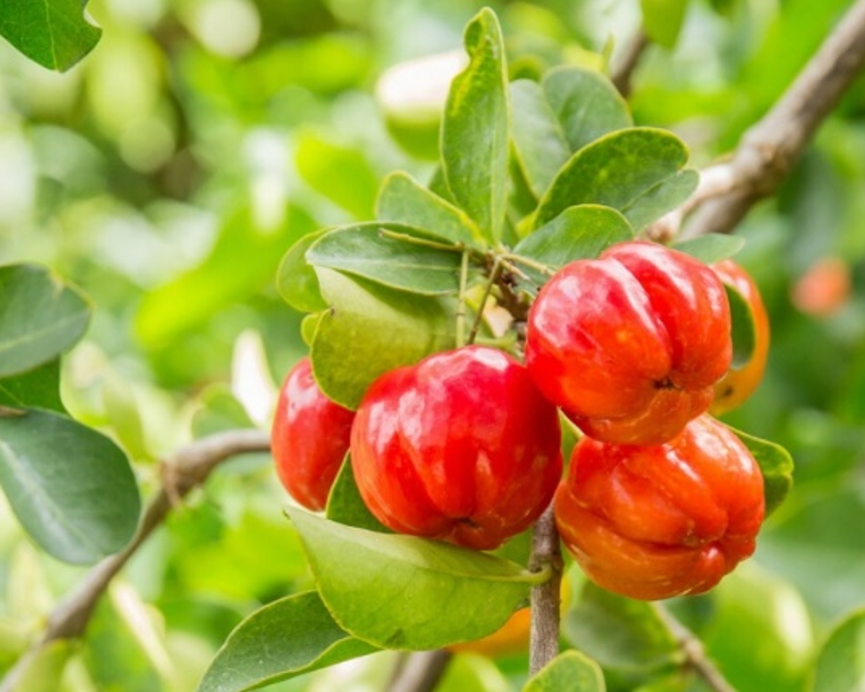METHOD OF QUANTITATIVE DETERMINATION OF THE AMOUNT OF ANTHOCYANINS IN THE FRUITS OF MALPIGHIA EMARGINATA
UDC 615.322:543.422.3
Abstract
The objects of the study were mature dried fruits of the fringed malpighia (Malpighia Emarginata, fam. Malpighiaceae). The fruits of malpighia are widely used in foreign medical practice as an antioxidant. The fruits of malpighia contain anthocyanins, vitamins, carotenoids. The most common method of quantitative determination of anthocyanins is spectrophotometry. The purpose of this work is to determine the amount of anthocyanins in the fruits of malpighia by spectrophotometry.
Quantitative determination of the amount of anthocyanins in the fruits of malpighia by direct spectrophotometry was carried out. The values of the optical density of the anthocyanin solution were recorded at a wavelength in the region of 250–700 nm. The analytical maxima of the studied compounds at 534 nm characteristic of cyanidin-3-O-glucoside were determined. Optimal conditions for the extraction of anthocyanins from the raw materials of this plant were determined (extractant – 40% ethanol; the ratio of "raw material – extractant" – 1 : 50; extraction time – 30 minutes; the degree of grinding of raw materials – 1.0 mm). It was determined that the error of a single determination of the content of anthocyanins in the fruits of malpighia with a confidence probability of 95% is ±6.79%.
Downloads
Metrics
References
Hanamura T., Uchida E., Aoki H. Journal of the Science of Food and Agriculture, 2008, vol. 88, pp. 1813–1820.
Delva L., Schneider R.G. Food Reviews International, 2013, vol. 29, no. 2, pp. 107–126.
Prakash A., Baskaran R. J. Food Sci. Technol., 2018, vol. 55, no. 9, pp. 3373–3384.
De Rosso V., Hillebrand V., Montilla S., Bobbio E.C., Winterhalter F.O., Mercadante A.Z. Journal of Food Composi-tion and Analysis, 2008, vol. 21, pp. 291–299.
Hanamura T., Hagiwara T., Kawagishi H. Bioscience, Biotechnology, and Biochemistry, 2005, vol. 69, pp. 280–286.
Kay C.D., Pereira-Caro G., Ludwig I.A., Clifford M.N., Crozier A. Annual Review of Food Science and Technology, 2017, vol. 8, pp. 155–180.
Medina-Medrano J.R., Almaraz-Abarca N., González-Elizondo M.S., Uribe-Soto J.N., González-Valdez L.S., Herrera-Arrieta Y. Botanical Studies, 2015, vol. 56, no. 24, pp. 1–13.
Santos-Buelga C., Scalbert A. Journal of the Science of Food and Agriculture, 2000, vol. 80, pp.1094–1117.
Castaneda Ovando A., Pacheco Hernandez M.L., Paez Hernandez M.E., Rodríguez J.A., Galan Vidal C.A. Food Chemistry, 2009, vol. 113, pp. 859–871.
Samylina I.A., Balandina I.A. Farmatsiya, 2004, no. 2, pp. 39–41. (in Russ.).
Belwal T., Devkota H. P., Hassan H.A., Ahluwalia S., Ramadan M.F., Mocan A., Atanasov A.G. Trends in Food Sci-ence & Technology, 2015, vol. 74, pp. 99–106.
Delva L., Goodrich-Schneider R. International Journal of Food Science and Technology, 2013, vol. 48, pp. 1048–1056.
Kumari M., Jain S. Research Journal of Recent Sciences, 2012, vol. 1, pp. 10–73.
Mezadr T., Villano D., Fernandez-Panchon M.S., García-Parrilla M.C., Troncoso A.M. Journal of Food Composition and Analysis, 2008, vol. 21, no. 4, pp. 282–290.
Deyneka L.A. Nauchnyye vedomosti BelGU. Seriya: Meditsina i farmatsiya, 2006, vol. 4, no. 3, pp. 92–100. (in Russ.).
Gosudarstvennaya farmakopeya Rossiyskoy Federatsii. 14-ye izd. [State Pharmacopoeia of the Russian Federation. 14th ed.]. Moscow, 2018, vol. 2. URL: http://femb.ru/femb/pharmacopea.php. (in Russ.).
Deyneka V.I., Grigor'yev A.M., Deyneka L.A., Shaposhnik Ye.I., Staroverov V.M. Zavodskaya laboratoriya, 2006, no. 3, pp. 16–20. (in Russ.).
Sorokopudov V.N., Deyneka V.I., Lukina I.P., Deyneka L.A. Khimiya rastitel'nogo syr'ya, 2005, no. 4, pp. 61–65. (in Russ.).
Kurdyukov Ye.Ye., Mitishev A.V., Vodop'yanova O.A. i dr. Vestnik Moskovskogo universiteta. Seriya 2: Khimiya, 2021, vol. 62, no. 6, pp. 523–525. (in Russ.).
Deyneka L.A. Nauchnyye vedomosti BelGU, 2011, vol. 15/1, no. 9, p. 364. (in Russ.).
Kurkin V.A., Ryazanova T.K. Farmatsiya, 2012, no. 2, pp. 10–13. (in Russ.).

Copyright (c) 2024 chemistry of plant raw material

This work is licensed under a Creative Commons Attribution 4.0 International License.

This work is licensed under a Creative Commons Attribution 4.0 International License.
The authors, which are published in this journal, agree to the following conditions:
1. Authors retain the copyright to the work and transfer to the journal the right of the first publication along with the work, at the same time licensing it under the terms of the Creative Commons Attribution License, which allows others to distribute this work with the obligatory indication of the authorship of this work and a link to the original publication in this journal .
2. The authors retain the right to enter into separate, additional contractual agreements for the non-exclusive distribution of the version of the work published by this journal (for example, to place it in the university depository or to publish it in a book), with reference to the original publication in this journal.
3. Authors are allowed to post their work on the Internet (for example, in a university repository or on their personal website) before and during the review process of this journal, as this may lead to a productive discussion, as well as more links to this published work.











